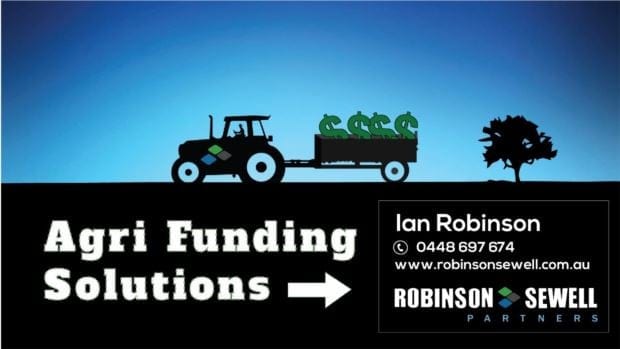
05 Oct Banking the Farm: A Financial Confession
There is around $67,000,000,000 lent to farmers around Australia from the traditional banks. Every day our farmers are banking on the banks banking the farm. The banks conduct compliant annual reviews to test the viability of each of their agribusiness clients every year. If they pass the credit performance check its business as usual, if they fail then it’s a work out solution or loan recall.
But how does a borrower test the banks to see if their appetite for lending is changing and where they sit in the spectrum of bankability?
The answer is that most agribusiness borrowers generally don’t test the banks nor test where they sit as a business within the banking spectrum. Their funding then becomes a blind spot for a financial grenade to explode without apparent warning. In these instances, the borrower has not created a mechanism within their business model to provide visibility as to the bank’s willingness to lend to their business, and under what guidelines.
For farmers who borrow, it is almost a laissez faire playground where both parties are agreeing to terms with one party having full visibility and the other doesn’t.
Under these trading terms it is of no surprise that we continually get asked by farmers;
- Which is the best bank to bank with?
- Which banks are lending to Ag?
- What is their appetite to lending?
- Is it getting tougher out there?
- Why are the banks taking so long to make decisions? Is there something wrong with our business?
And so it goes.
The realities of banking in terms of the bank’s internal mechanisms are not communicated to the borrowers. This is not designed for public knowledge. It is in the bank’s best interest to keep a positive perception in the open market of their capability to lend whilst behind the scenes they reconfigure their balance sheet lending to meet their own internal requirements and targets. This perception is called marketing, and they are very good at it.
What does this mean for the borrower?
The borrower must be accountable to undertake their own due diligence to ascertain their net worth in the value chain of banking. At face value, this would be deemed an improbable task due to both time and skill required to obtain a measurable reward for their investment in this process.
On the flip side the reward is well worth the effort.
How does a borrower achieve it and where does this reward lie?
Reward is Twofold.
Let’s talk reward first, it is definitively more exciting than process.
First, it removes the “blind spot” of funding risk. Having an intimate knowledge of the bankability of the business, and knowing what the borrowing thresholds are to make viable strategic decisions is first and foremost. Pricing is immaterial if funding risk (albeit tail end) can destroy the liquidity, wealth and viability of a business.
Second, it can create economic advantage to the business. With a lower cost of capital, and with access to flexible capital, both gross margin and opportunity capture is a most desirable outcome.
Now wouldn’t it be a shame not to have that reward in your business?
Timing… timing… timing…
Seek advice if required, but timing is an essential characteristic. Layered with timing is the art of presentation. Knowing how to present an enterprise with so many unforeseen “risk” variables inherent within agribusiness is critical to satisfying credit policy. Accidental or deliberate misrepresentation of any business to the financiers is at the peril of the business.
But by applying some true and tested principles of good corporate governance, the reward is profound for those that apply and adhere to the rules of engagement.
Banking is not static. Banking is not set and forget. The banks are continually evolving their exposure and appetite, and businesses by their very nature are forever evolving.
“Never the twain shall meet” ~ Rudyard Kipling, Barrack-room ballads 1892
Food for thought!



Sorry, the comment form is closed at this time.